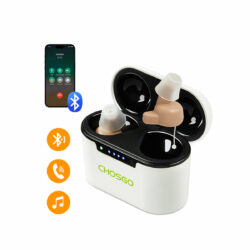The Importance of Communication Between Medical Health Providers and Patients
The Importance of Communication Between Medical Health Providers and Patients
There are many benefits to using an electronic health record system (EMR) for the management of your medical files. For instance, many of these systems are set up to track the retention period for medical records. When that period is over, medical healthcare providers for online doctor can delete files automatically. There are other ways to destroy medical records, too, whether they are in paper form or digitally. Medical health providers can have paper records destroyed by a secure shredding service or their own on-site shredder. They must also have a formal destruction certificate.
Interactions with patients
The effectiveness of communication interventions in the health-care setting depends on the degree of patient participation in a consultation. In the present study, we will explore the interactional design of physician-patient encounters. We will examine physician-patient interactions in physical examination settings and in environments where the patients are less cooperative. We will also explore the association between patient involvement and outcome. The results of our study will inform the development of medical education and training programs.
Patient ratings of interactions with health care providers were significantly higher for patients who were African-American than for white patients. This finding suggests that the health care system’s quality of service may be impacted by patient race. We will discuss how race/ethnicity influences the quality of care and identify possible factors that affect patients’ experiences. In addition, the quality of care experienced by patients and providers may vary in accordance with the patient’s socioeconomic status.
Interactions with other providers
The quality of care patients receive depends on sustained interactions between medical health providers and other providers. Researchers have noted a significant difference between the experiences of black and white patients and those of those from other races. Although differences are not statistically significant, some factors may be involved. For example, patient race is related to patient satisfaction with care and the quality of interactions between providers and health plans. The study’s results suggest that provider-patient interactions may play a role in patient satisfaction.
The researchers analyzed the behavior of black patients who received care from doctors with high implicit bias. Interestingly, they found that physicians with high implicit bias were most likely to negatively treat black patients. The study shows the validity of implicit-bias theory in real-world medical interactions. The findings were published in the Journal of Experimental Social Psychology. This research also demonstrates the importance of examining medical health providers’ communication behaviors with patients.
Collaboration with patients
Healthcare collaboration is the practice of two or more virtual health care providers working together toward a common goal. The participants may include primary care providers, tertiary care providers, and any type of therapy practitioner. It has many benefits. The collaborative process improves patient care and reduces errors, such as duplicative tests and medication. It can also reduce costs in some cases. Read on to learn more about the advantages of collaboration.
Interprofessional collaboration helps improve patient outcomes, including fewer medication errors and lower healthcare costs. It also reduces operational inefficiencies, such as workflow redundancies. In one hospital, collaborative efforts cut the rate of fall-related injuries by half, increased annualized bed turn by 20 percent, and boosted discharges before noon. In a study of 20 hospitals, interprofessional collaboration reduced the risk of medication errors and saved 700 hours of medical staff time per patient.
Interactions with medical staff
The quality of interactions between patients and medical health professionals determines the success of health care. Patients who participate in treatment discussions and who support treatment decisions are more likely to comply with prescribed medications. Patient participation is important for medical outcomes and quality of interactions is affected by the communication style chosen by health providers. This article describes communication styles and the ways in which they affect patient satisfaction. Learn how to improve your interactions with health professionals and get better care.
This study involved interviews with individuals in the healthcare industry, as well as observation of healthcare professionals. Participants were asked to complete written consent prior to participating. Healthcare professionals included nurses, GPs, homecare workers, occupational therapists, and physiotherapists. They were recruited during the day shift and followed up by phone interviews. Participants were asked to describe their interactions with healthcare professionals during various events. The researchers then conducted an extensive analysis of marketing materials and hospital policies to understand the factors that influenced patients’ interactions with healthcare professionals.
























































